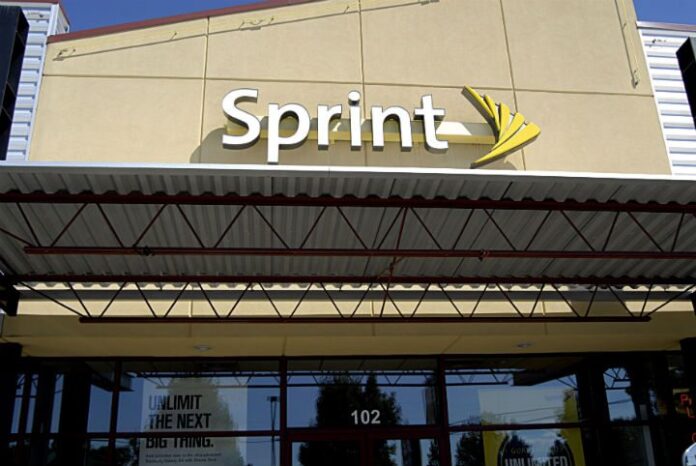Roger Entner dissects Sprint as a viable carrier, finds hope in need of focus
Sprint had a good subscriber quarter with an extremely aggressive pricing plan offering 50% off competitor pricing plans, guaranteeing the low prices until 2018. Sprint is basically buying customers. Nothing wrong with that, but it also means they have to pay for them with substantially lower revenue and profit. But, the marginal revenue from “50% off” customers is still higher than Sprint’s cost per user of $11.60 per month, creating a positive contribution to margin. Progress is slow, but beggars can’t be choosers.
While Wall Street applauds the growth in subscribers by boosting Sprint’s stock by 20%, it’s still extremely worried about Sprint’s financial position. Sprint’s bonds are trading at distressed levels and their shares are at a worst-case scenario basis. SoftBank’s shares in Tokyo dropped as much as 18% between Jan. 16 and Jan. 20. Some financial analysts go so far as to paint a picture of insolvency and bankruptcy. When looking at the situation, there is no doubt it is serious, but I think there is a good amount of overreaction going on.
SoftBank spent $22 billion to acquire more than 80% of Sprint. This significant investment alone combined with the value of Sprint’s spectrum holdings – the largest of any company in the United States – makes it unlikely SoftBank would be willing to write off their equity in Sprint and let it just go into bankruptcy. After all, bankruptcy means the ownership of the company gets transferred to the bondholders. Some claim SoftBank does not have the necessary resources to keep Sprint afloat. Yeah, right. According to a recent article in The Wall Street Journal, SoftBank spent $2 billion on Indian technology companies in 2015, and is on track to exceed its projected $10 billion investment in India over the next 10 years. SoftBank Chairman Masayoshi Son was quoted as saying in regards to the size of the Indian investment “if we rescale, we will only scale up.” The money is there, the motivation is there, the question is if the will is there as well.
Sanity alone would dictate SoftBank will do everything in its power to keep Sprint a going concern. You just don’t lose $22 billion plus all the subsequent investment over a few billion dollars more. It would be the equivalent of cutting off the nose to spite the face. This means Sprint will keep going, especially when free cash flow will be indeed positive as Sprint’s leadership predicts. The question is at what level of spending and investment and if that is enough to keep the positive momentum going. The competition does not sleep after all.
Sprint is basically trying to follow a light version of T-Mobile US’ playbook. Lower prices, improved network, combined with advertising that highlights both. Ideally you under-promise, over-deliver and get word of mouth credibility to seize the value leadership spot. Sprint successfully did just that with the “Any Mobile, Any Time” campaign and then fell off the horse. Network Vision was a great and necessary idea, but poorly executed. The company lost the value leadership position against T-Mobile US and that was it. The key to success is to win back the value leadership position while maintaining a positive profit contribution and containing cost. Operational excellence combined with growth – even lower profit margin growth – could let Sprint grow into profitability.
Let’s look at the case Sprint will not be successful – and after what promises to be a pretty successful 2016 on the net additions front, the long-term perspective looks very challenging considering some extremely high risk maneuvers like the plan to decommission existing sites and use government sites for cost savings – even if it was only a “test balloon” in the press to gauge reaction. For Sprint, which has a poor track record for network overhauls, the risks of giving up control over some parts of its network infrastructure are just not worth the reward of cutting cost by a billion dollars or two. Plans such as this are gambling with the last bits of network credibility Sprint has and with network quality a big competitive differentiator in wireless. Unimpressive network performance? Customers walk.
After significant pushback from analysts based on a leaked version of their network plan, Sprint has substantially moderated their approach, as discussed on their most recent earnings call. In flashbacks to previous earnings calls, Sprint reiterated their plans to use microwave backhaul to lower cost as it plans to move away from special access lines for backhaul. We have to remember Sprint first articulated these plans 10 years ago, but nothing significant has happened, while all their competitors have moved away from special access lines for backhaul and use almost exclusively fiber and microwave. What’s the worst-case scenario? The last time Son experienced a setback in the United States courtesy of the Federal Communications Commission rejecting his merger ideas, he disengaged from the United States and Sprint suffered a year of stasis. In the repetition of such a case, Sprint could revert back to being a discounted cash flow business similar to what the pager business (SPOK Holdings) is today. All capital, operational and marketing investment in such a scenario go down to the very minimum and the existing customer base goes through a managed, profitable decline.
In the interim, profits get maximized through spectrum divestitures to match the spectrum portfolio with the decreased demand. Even at a significant discount, Sprint’s spectrum portfolio is worth substantially more than what SoftBank has invested in its American adventure. The only significant barrier to such a low risk, profit-maximizing move would be if the FCC would start to interfere or even block spectrum sales as T-Mobile US is increasingly asking the FCC to do. If the FCC will start to entertain blocking pure spectrum sales, the value of spectrum will decline substantially as an asset that no longer can be sold freely is worth substantially less. The repercussions would be massive. Sprint’s already undersized valuation would become miniscule. Dish Network’s valuation, which is substantially driven by its spectrum holdings, would deflate substantially. The interest of non-carriers in upcoming auctions would disappear as their fail-safe, spectrum buyers of last resort – AT&T, Verizon Communications and to a lesser degree T-Mobile US – would have less opportunity to buy the underlying spectrum assets if their mobile play – if they would chose to launch – would fail.
I think Sprint will do well in 2016 when compared to the recent past and expectations. How it will perform in 2017 and beyond is a by far greater question mark.
Roger Entner is the founder and lead analyst of Recon Analytics. Entner’s main focus is the competitive telecom market place and how the market participants interact. He is one of the leading experts researching the wireless experience, how it influences customer behavior and how customers make choices. Before starting Recon Analytics in January 2011, Entner was the SVP, head of research and insights for the telecom practice of The Nielsen Co. Before that, Entner was SVP of the communications sector at IAG Research and was part of the senior leadership team when Nielsen acquired IAG in April 2008. Prior to joining IAG Research in 2007, Entner launched the North American coverage for Ovum as VP of telecom. He established the company as one of the leading telecom research providers in North America. Before joining Ovum, Entner headed the wireless carrier research group at the Yankee Group from 2001 to 2004. Entner received a Bachelor of Arts in business organization from the Heriot-Watt University in Edinburgh, United Kingdom, a Master of Business Administration from the George Washington University in Washington, D.C., and an Honorary Doctorate of Science from Heriot-Watt University.
Editor’s Note: Welcome to Analyst Angle. We’ve collected a group of the industry’s leading analysts to give their outlook on the hot topics in the wireless industry.


